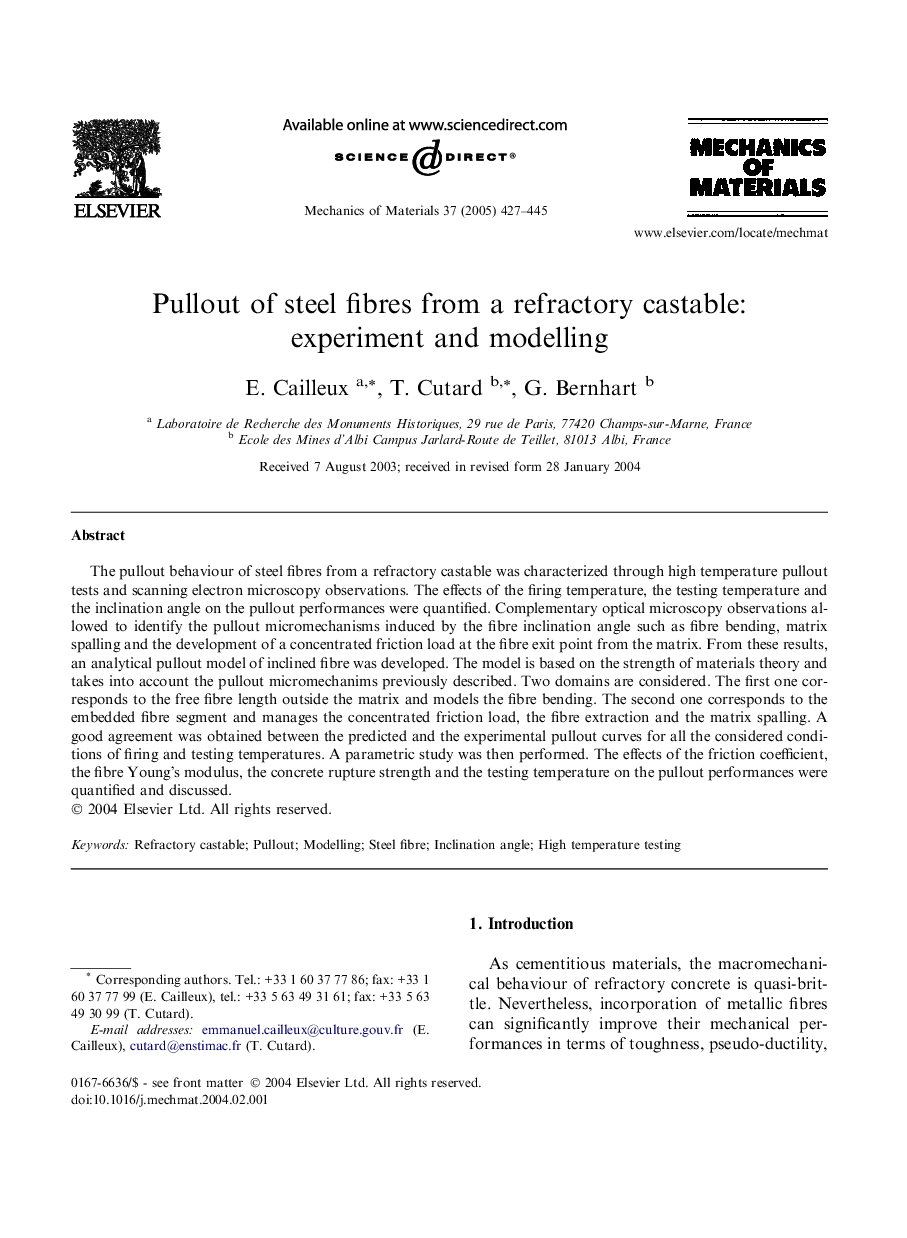| Article ID | Journal | Published Year | Pages | File Type |
|---|---|---|---|---|
| 9711653 | Mechanics of Materials | 2005 | 19 Pages |
Abstract
The pullout behaviour of steel fibres from a refractory castable was characterized through high temperature pullout tests and scanning electron microscopy observations. The effects of the firing temperature, the testing temperature and the inclination angle on the pullout performances were quantified. Complementary optical microscopy observations allowed to identify the pullout micromechanisms induced by the fibre inclination angle such as fibre bending, matrix spalling and the development of a concentrated friction load at the fibre exit point from the matrix. From these results, an analytical pullout model of inclined fibre was developed. The model is based on the strength of materials theory and takes into account the pullout micromechanims previously described. Two domains are considered. The first one corresponds to the free fibre length outside the matrix and models the fibre bending. The second one corresponds to the embedded fibre segment and manages the concentrated friction load, the fibre extraction and the matrix spalling. A good agreement was obtained between the predicted and the experimental pullout curves for all the considered conditions of firing and testing temperatures. A parametric study was then performed. The effects of the friction coefficient, the fibre Young's modulus, the concrete rupture strength and the testing temperature on the pullout performances were quantified and discussed.
Related Topics
Physical Sciences and Engineering
Engineering
Mechanical Engineering
Authors
E. Cailleux, T. Cutard, G. Bernhart,
